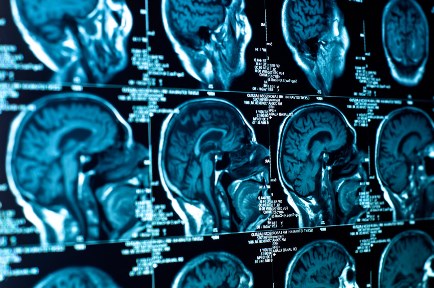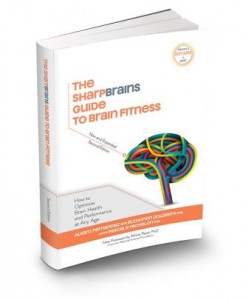To boost brainpower, ignore “smart drugs” and focus on experiences that harness neuroplasticity the right way

Traditional scientific ideas cast the human brain as a fixed and essentially limited system that only degrades with age. This view saw the brain as a rigid machine in many ways, pretty much set after childhood. By contrast, we have now come to appreciate that the human brain is actually a highly dynamic and constantly reorganizing system, capable of being shaped and reshaped across the entire lifespan. It is believed that every experience alters the brain’s organization at some level. The central concept in this new approach is neuroplasticity, the brain’s lifelong capacity to change and rewire itself in response to the stimulation of learning and experience. This includes both the lifelong ability to create new neurons – neurogenesis – and to create new connections between neurons – synaptogenesis.
In a young brain, neuroplasticity, including neurogenesis and synaptogenesis, allows for fast learning, as well as for potentially faster repair. As we age, the rate of neuroplasticity declines, but does not come to a halt.
Lifelong neuroplasticity has major consequences. At a basic level, it means that our lifestyles and actions play a meaningful role in how our brains physically change throughout life. More specifically, neuroplasticity gives us the power to resist the effects of decline or disease by supporting our ability to accumulate knowledge and experiences, i.e., to learn. Learning helps to increase the so-called brain reserve and strengthen the brain against age-related decline and potential dementia pathology by increasing the connections between neurons, increasing cellular metabolism, and increasing the production of nerve growth factor, a substance produced by the body to help maintain and repair neurons.
Furthermore, neuroplasticity not only enables us to prevent future cognitive decline but also provides a basis for a more optimistic outlook when it comes to our ability to address existing deficits, such as learning difficulties and recovery after traumatic brain injury or stroke. And finally, beyond preventing decline and overcoming deficits, neuroplasticity is at the core of the ability to actively improve our brains through brain training. By practicing a skill, one can repeatedly stimulate the same area of the brain, which strengthens existing neural connections and creates new ones. Over time, the brain can become more efficient, requiring less effort to do the same job.
Brain imaging provides examples of neuroplasticity
A key contributor to our growing understanding of large-scale neuroplasticity was the development of high-level brain imaging technologies. By allowing scientists to produce images of the brain that show its structure, as well as where activity spikes as it is engages in various cognitive activities, these neuroimaging methods have revolutionized neuroscience in the same way that the telescope revolutionized astronomy.
Evidence of neuroplasticity gleaned from brain imaging has come mostly from the brains of individuals who became experts in a particular skill. Why? Because, as you might have guessed, changes associated with learning occur massively when we become expert in a specific function or domain.
For example, several fascinating studies shows that London taxi drivers have a larger hippocampus than London bus drivers. This is explained by the fact that the hippocampus is important for forming and accessing complex memories, including the spatial memories necessary for efficient navigation. Taxi drivers have to navigate around London whereas bus drivers follow a limited set of routes. Thus, the hippocampus of a taxi driver is particularly stimulated and changes over time as a result.
Plasticity can also be observed in the brains of bilinguals. It looks like learning a second language is directly associated with structural changes in the brain: a region called the left inferior parietal cortex is larger in bilingual brains than in monolingual brains. Plastic changes have also been found to occur in musicians’ brains (compared to non-musicians), with areas involved in playing music (motor regions, anterior superior parietal areas, and inferior temporal areas) showing increased volume.
These changes do not require a lifetime to occur; a few years or even months can be enough. For instance, researchers imaged the brains of German medical students three months before their medical exam, and again right after the exam, and then compared the brains of these students to the brains of students who were not studying for the exam at this time. The results: Medical students’ brains showed changes in regions of the parietal cortex as well as in the posterior hippocampus. As you can probably guess, these regions are known to be involved in memory and learning.
Don’t count on miracles
The large-scale changes observed in these studies were the result of serious effort over time, be it learning the streets of London or studying for a medical exam. It would be nice, of course, if we could all just take a pill to quickly and painlessly increase brain fitness: to suddenly become more attentive, never forget a name, and perform all the mental math we want. However, despite large investments, evidence that “smart” drugs actually work is scarce at the present. The recent extensive NIH meta-analysis found no evidence that any of the medications tracked (namely statins, antihypertensive medications, cholinesterase inhibitors, or estrogen) were successful at improving or maintaining cognitive functioning over time. Some drugs have produced positive effects for people who have neurological disorders such as Alzheimer’s disease, Parkinson’s disease, or Attention Deficit Disorder – when patients take these drugs, their symptoms are usually lessened. However, no solid scientific evidence has shown so far that these drugs are reliably beneficial or safe for people with normal functioning. Even in the supposed scenario that a smart drug that can “double brainpower” with no side effects is discovered, it would be misguided to believe that the drug alone would be enough. If things worked that way, why do steroid-taking athletes still have to pay attention to their physical exercise regimens?
What is supported by ample evidence is the brain’s capacity to be flexible and be molded through experience. The question then becomes: “What activities or behaviors can provide the right kind of experience to help optimize my brain?”
–This is an adapted excerpt from the book “The SharpBrains Guide to Brain Fitness: How to Optimize Brain Health and Performance at Any Age” (April 2013; 284 pages), featured by Kirkus Reviews as “A stimulating, challenging resource, full of solid information and practical tips for improving brain health.”


